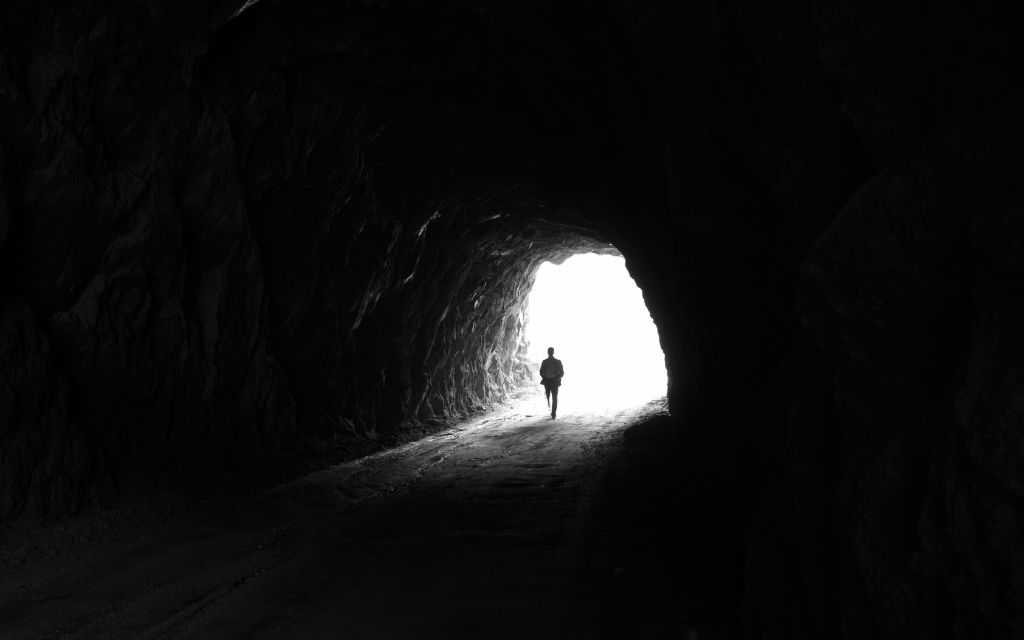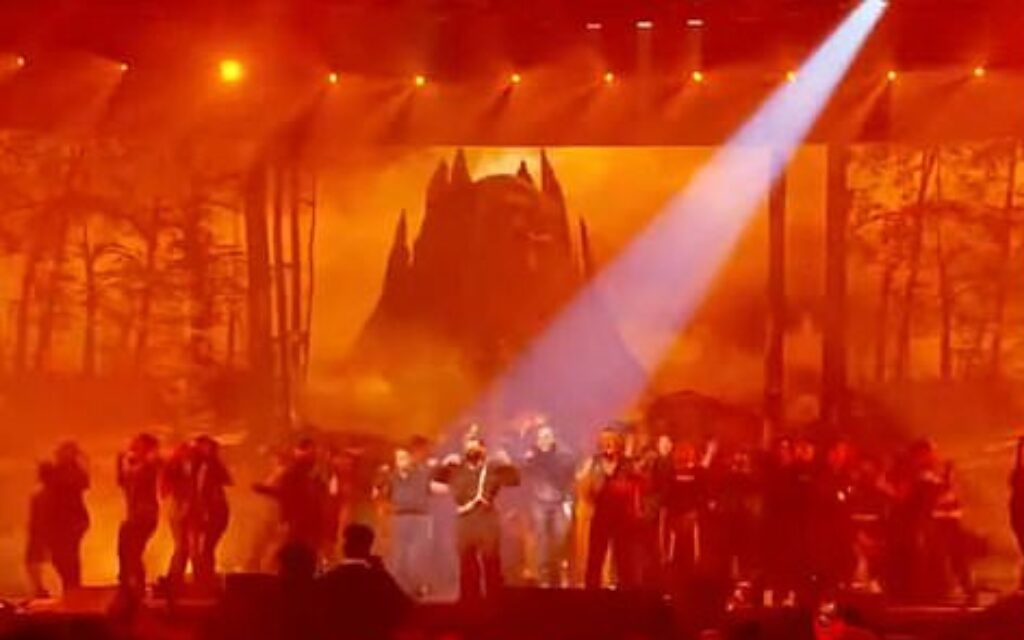If you had asked me a year ago to recite the Nativity story, I would have said something like this:
“2000-ish years ago, Mary and Joseph traveled on a donkey from Nazareth to Bethlehem. Upon their arrival, they couldn’t find a room in an inn and were turned away by the innkeeper. Consequently, they went to a barn, and Mary, who was due, gave birth to Jesus there, surrounded by animals and hay. Afterward, three wise men came to visit Jesus and presented him with gifts.“
Have you heard a similar story regarding the birth of Jesus? Well, it’s almost entirely false!
The Nativity story has been distorted with several myths that crept in over the years. And This mythological retelling of the birth of Jesus is so pervasive that even Christians believe it.
Even though I grew up in church and heard the faithful biblical account of the Nativity every year at Christmas mass, I still believed in the fictionalized version. “Hearing” it from the Bible once a year couldn’t measure up to the plethora of songs, movies, pictures, books, etc., portraying several Christmas myths throughout the year.
Thankfully, last year, I stumbled upon a study based on The Case for Christmas by Lee Strobel and learned the real story of the birth of Christ. And I must say, more than once, I had to check my Bible because I couldn’t believe most of what I believe were lies.
So, if like me you have been deceived, here are some popular Christmas myths and the truth that will set you free!
Myth #1: Jesus was born on December 25
Although millions of people celebrate Jesus’s birth on December 25, it is not the actual day He was born. The Bible doesn’t say the precise date of Jesus’s birth, and some scholars believe He may have been born in the spring or summer. The early Christians chose December 25 to celebrate His birthday, and there are different theories for their choice.
Some say they chose it because the Jewish festival of lights (Hanukkah), falls on 25 to 30 Kislev, which is usually around December. On that day, Jewish celebrates the rededication of the temple in Jerusalem with feasts and gifts.
Some say the early Christians believed Mary received news of her pregnancy on March 25 (the same day Jesus might have died) as tradition held that Jesus died on the day He was born. So, they did some math and celebrated His birthday nine months later, which is December 25.
And some say it was because winter solstice and the pagan holidays Saturnalia and Dies Natalis Solis Invicti (birthday of the unconquered sun) took place around that time. The early Christians picked that day to take over the pagan holidays and replace it with a holy celebration.
Whichever the case, we can all agree that Jesus was most likely not born on December 25.
Myth #2: Mary and Joseph rode on a donkey
I once heard a pastor say Joseph and Mary rode on a donkey to Bethlehem. However, the Bible doesn’t say how they traveled. Luke 2:4 says, “And Joseph also went up from Galilee, from the town of Nazareth to Judea, to the city of David, which is called Bethlehem, because he was of the house and lineage of David.”
Now, Bethlehem was about 90 miles from Nazareth. So, they could indeed have gone by donkey. But they could have also used another means like a horse, cart, camel, or even afoot. As the Bible doesn’t specify, we shouldn’t either.
Myth #3: Mary gave birth as soon as she arrived in Bethlehem
It’s a prevalent misconception that Mary was about to give birth by the time she arrived in Bethlehem. I also heard in church once.
But there is nothing in the Bible suggesting Mary was about to give birth. Luke 2:6 says, “and while they were there, the time came for her to give birth.” She could have been in Bethlehem for days, weeks, or even months before her due date.
Myth #4: An innkeeper turned Mary and Joseph away
We have all heard the story of the mean old innkeeper who turned Joseph and Mary away. Well, the Bible doesn’t mention any innkeeper. Mary and Joseph might not even have stayed in an inn.
True, Luke 2:7 does say there was no place for them in the inn. However, but “the inn” was not a first-century hotel. The Greek word translated as the inn is kataluma, which means lodging place. It appears two other times in the New Testament. In Luke 22:11 and Mark 14:14 where it is translated as a guest room.
So, it’s more likely that Joseph and Mary went to a relative. And either there was no space in the guest room, and they had to stay in the family room. Or they stayed in the guest room, but there was no space for baby Jesus. See below.
Myth #5: Jesus was born in a stable
Following the previous myth, since the innkeeper turned Joseph and Mary away, they had to find shelter in a stable. While they were there, Mary gave birth. This one might be the most famous myth of all. I grew up with that story, and we even had a nativity creche depicting this scene. But it’s all lies.
Luke 2:7 only says the baby was laid in a manger, which is “a long open box or trough for horses or cattle to eat.” It doesn’t mean he was born in it or a stable or cave surrounded by animals.
Hospitality was a big deal in Jewish culture. It would have been unthinkable for a Jew to show such unkindness, especially to a pregnant woman. Moreover, we know Joseph and Mary were in Bethlehem for some time before Mary gave birth. So even if they were turned away, they could have found lodging somewhere else.
It’s most likely that Mary gave birth in the lower room and then placed Jesus in a manger nearby. It doesn’t mean it was a stable as some people kept their animals in the house at night.
Myth #6: A star hovered in the sky the night Jesus was born
The nativity scene almost always features a bright shining star hanging over the manger the night of Jesus’ birth. There was indeed a star, but it wasn’t on that first night.
The first sign of Jesus’s birth came from an angel. He said to some shepherds, “And this will be a sign for you: you will find a baby wrapped in swaddling cloths and lying in a manger.” (Luke 2:12)
The star came a little later and was a sign for the wise men (Matthew 2:2). The star arose and stayed where Jesus was to guide the wise men (Matthew 2:9).
It is unknown when this happened, but it was not the same night Jesus was born. Matthew 2:11 says, “and going into the house, they saw the child with Mary, his mother, and they fell down and worshipped him.” By the time the wise men saw the star and went to see Jesus, he was no longer a babe lying in a manger, but older. Most likely between ages 0-2 (Matthew 2:16).
Myth #7: Three wise men visited Jesus
It is a common belief that three wise men came to visit baby Jesus and presented him with gifts. However, the Bible doesn’t mention the number of wise men who visited Jesus.
Matthew 2:1 only says, “Now after Jesus was born in Bethlehem of Judea in the days of Herod, the king, behold, wise men from the east came to Jerusalem.”
This myth probably arose because the wise men brought three gifts: gold, frankincense, and myrrh (Matthew 2:11).
Bonus Myth: Joy to the world is a Christmas song
Joy to the World is a classic Christmas song. However, it was not originally written as a Christmas song. It is not even about Christmas!
In 1719, Isaac Watts wrote it as a poem based on Psalm 98, which is about the second coming and future reign of Christ. Sometime later, his poem was set to music, and it became one of the most famous Christmas songs ever! Sorry if I ruined your favorite Chrismas song.
The nativity of Christ is a beautiful story of hope, peace, joy, and love. It doesn’t need any embellishment or lies added to it. If you believe any of these myths, I hope you will cast them aside and rest upon the accurate biblical account of the birth of our Lord and savior.










A small correction. As you can see on my site, the first time the Magi saw the rising star near Jerusalem early in the morning on 26 August 12 BCE. The next morning they went to Bethlehem and worshipped Jesus at circa 8 am on 27 (not 25) August 12 BCE. Alexander Reznikov.
I’ve just read with interest your article: “7 Popular Christmas Myths”. I agree with you: in order to come to the real story of Christmas, it is necessary to overcome centuries-old misconceptions in the interpretation of the canonical texts. For instance, the Gospel does not say that the star led the Magi from the East to Jerusalem and then from Jerusalem to Bethlehem. It was imagined by commentators. The Gospel reports about only two separate sightings of an unusual star by the Magi. The first time the Magi saw it when it rose. It means that probably it was at… Read more »
Thanks for the additional insights, I will check out your post!